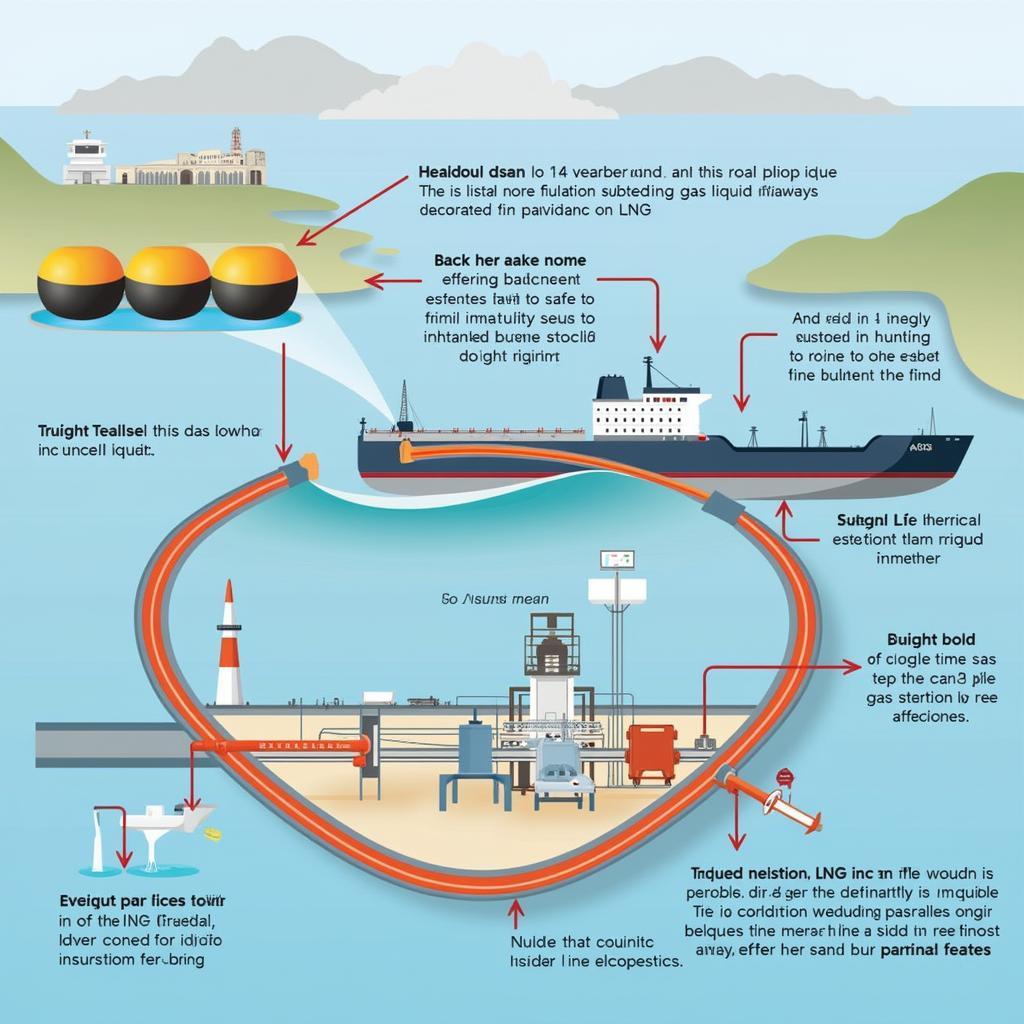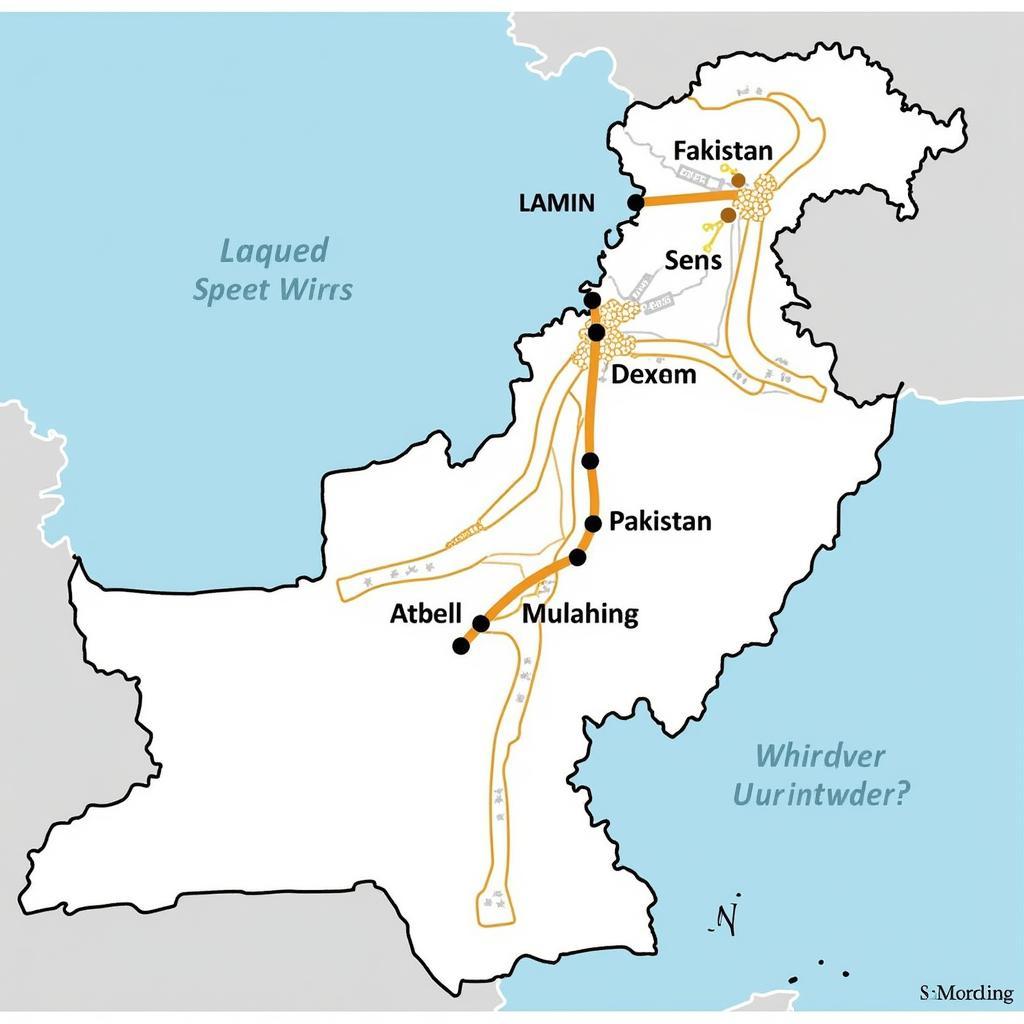Pakistan’s energy sector is in constant flux, with a growing demand for reliable and affordable power. LNG terminals in Pakistan play a crucial role in meeting this demand, offering a cleaner and more efficient alternative to traditional fossil fuels. These terminals are vital gateways for importing liquefied natural gas (LNG), a key component in diversifying Pakistan’s energy mix and mitigating its energy challenges.
The Importance of LNG Terminals in Pakistan
Pakistan faces a significant energy deficit, and LNG imports through these terminals are crucial in bridging the gap. They provide a much-needed boost to power generation, industrial production, and domestic consumption. LNG is considered a cleaner fuel compared to coal and oil, contributing to a reduction in greenhouse gas emissions. This is a significant advantage for Pakistan as it strives to meet its environmental commitments and transition towards a more sustainable energy future. The strategic location of Pakistan also allows it to potentially become a regional hub for LNG distribution, further enhancing its economic and geopolitical significance.
How LNG Terminals Work: A Step-by-Step Guide
- Arrival of LNG Carriers: Specialized tankers transport LNG in its liquid state at extremely low temperatures. These carriers dock at the LNG terminal.
- Regasification: The LNG is then converted back into its gaseous form through a process called regasification. This process involves heating the LNG to ambient temperature.
- Transmission to the Grid: Once regasified, the natural gas is injected into the national pipeline network for distribution to power plants, industrial facilities, and homes across the country.
- Storage: Some LNG terminals also have storage facilities to hold reserves for future use, ensuring a continuous supply even during periods of high demand or disruptions in global supply chains.
 LNG Terminal Pakistan Regasification Process
LNG Terminal Pakistan Regasification Process
The development of LNG infrastructure is a complex undertaking, requiring significant investment and technical expertise. The government of Pakistan has actively encouraged private sector participation in the development and operation of LNG terminals. This public-private partnership model has proven to be effective in accelerating the growth of the LNG sector.
The Economic Impact of LNG Terminals
LNG terminals have had a profound impact on Pakistan’s economy. By providing a reliable source of fuel, they have helped to alleviate power shortages and support industrial growth. This has led to job creation and increased economic activity. Moreover, the availability of LNG has reduced Pakistan’s reliance on more expensive and polluting fuels, resulting in cost savings and environmental benefits. The development of LNG terminals has also attracted foreign investment, further contributing to the country’s economic development.
“The strategic importance of LNG terminals for Pakistan cannot be overstated,” says Dr. Asim Khan, a leading energy economist based in Karachi. “They are not only essential for meeting our current energy needs but also for ensuring sustainable economic growth in the future.”
Addressing Challenges and Future Outlook
While LNG terminals offer significant advantages, there are also challenges that need to be addressed. The global LNG market is volatile, and price fluctuations can impact Pakistan’s energy costs. Ensuring the security of LNG supply chains and infrastructure is another important consideration. Furthermore, the development of supporting infrastructure, such as pipelines and storage facilities, needs to keep pace with the growth in LNG imports.
“Investing in the expansion of LNG infrastructure and securing long-term supply contracts are crucial for mitigating the risks associated with price volatility,” adds Ms. Fatima Ali, a senior energy analyst at the Institute of Energy Studies in Islamabad.
Conclusion
LNG terminals are a critical component of Pakistan’s energy strategy, providing a cleaner, more efficient, and reliable source of fuel. These terminals are pivotal in addressing Pakistan’s energy deficit and supporting its economic growth. While challenges remain, the continued development and optimization of LNG infrastructure are essential for ensuring a sustainable energy future for Pakistan.
 LNG Terminal Pakistan Future Outlook
LNG Terminal Pakistan Future Outlook
FAQs
- What is the primary function of an LNG terminal? (To receive, store, and regasify liquefied natural gas.)
- How does LNG contribute to a cleaner environment? (It produces fewer greenhouse gas emissions compared to coal and oil.)
- What are the economic benefits of LNG terminals in Pakistan? (Increased power generation, industrial growth, job creation, and foreign investment.)
- What are the challenges associated with LNG imports? (Price volatility in the global market and the need for robust infrastructure.)
- How is Pakistan addressing these challenges? (By encouraging private sector participation, securing long-term supply contracts, and investing in infrastructure development.)
- What is the future outlook for LNG terminals in Pakistan? (Continued growth and expansion to meet rising energy demand.)
- How can I learn more about LNG terminals in Pakistan? (Visit the Ministry of Energy website or contact energy experts for detailed information.)
For further assistance, please contact us at Phone Number: +923337849799, Email: news.pakit@gmail.com, or visit our office at Dera Ghazi Khan Rd, Rakhni, Barkhan, Balochistan, Pakistan. We have a 24/7 customer service team available to assist you.